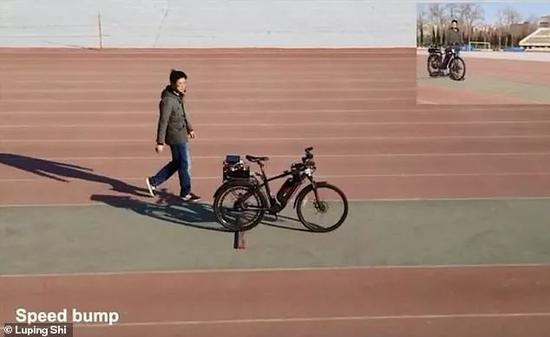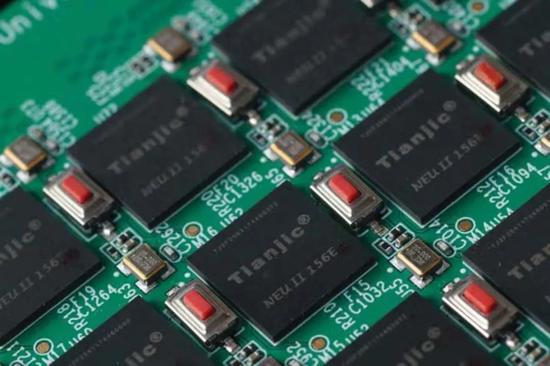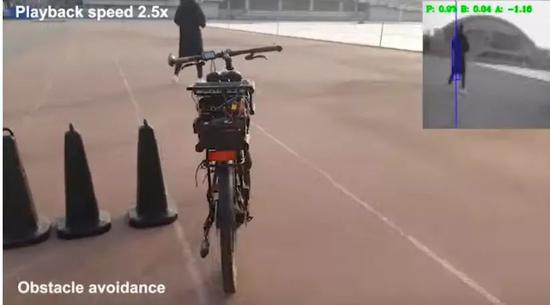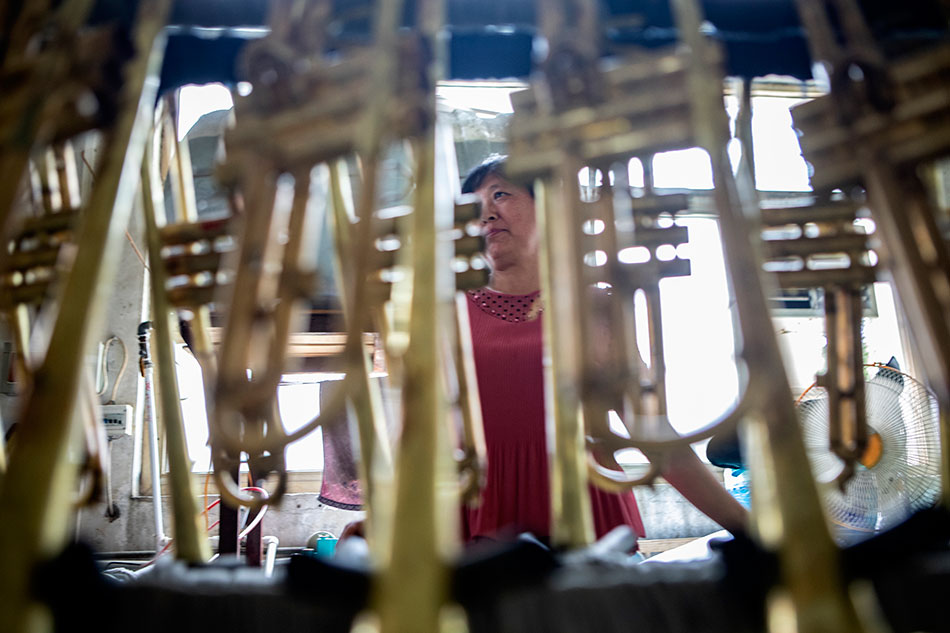原标题:外媒热议!中国开发的这款AI芯片“展示了计算机硬件的未来”
棒!中国类脑芯片首登《自然》封面
八月的第一天,中国发明就登上了世界最权威及最有名望的学术期刊之一——《自然》杂志的封面,实现了中国在芯片和人工智能两大领域《自然》论文零的突破。

清华大学施路平团队近日发布的研究成果——类脑计算芯片“天机芯”。该芯片是世界首款异构融合类脑芯片,也是世界上第一个既可支持脉冲神经网络又可支持人工神经网路的人工智能芯片。
《自然》杂志概述了这项中国智造的创新与潜力:
There are two main approaches to developing artificial general intelligence。 One is rooted in neuroscience, and attempts to construct circuits that closely mimic the brain。 The other is grounded in computer science, and uses computers to execute machine-learning algorithms。
开发人工通用智能主要有两种方法。其中一种根植于神经科学,试图构建与大脑极为相似的回路。另一种基于计算机科学,使用计算机执行机器学习算法。
In this week’s issue, Luping Shi and his colleagues reveal the Tianjic chip — an electronic chip that integrates the two approaches into one hybrid platform。 The Tianjic chip has multiple functional cores that are readily reconfigurable, enabling it to accommodate both machine-learning algorithms and brain-inspired circuits。
在本周发行的期刊中,施路平和他的同事们展示了天机芯片——一种将两种方法集成到一个混合平台上的电子芯片。该芯片具有多个功能核心,易于重新配置,使其能够适应机器学习算法和大脑启发的电路。
The researchers demonstrate the potential of this approach by incorporating one of their chips into a riderless autonomous bicycle, which can self-balance, is voice controllable and can detect and avoid obstacles, all as a result of the Tianjic chip’s simultaneous processing of versatile algorithms and models。
研究人员展示了这种方法的潜力,他们将其中一个芯片配备到一辆无人驾驶的自动自行车上,这款自行车可以自我平衡,接受声控,还可以检测和避免障碍物,这都是天机芯同时处理通用算法和模型的结果。

这项不一般的发明,同时还代表着中国在芯片设计方面的突飞猛进,立刻吸引了各大外媒的注意力:
 《纽约时报》:如今,一种无人驾驶自行车诞生了 —— 这不是第一辆自动驾驶自行车。但配备了人工智能芯片后,它可能成为最接近独立思考的。
《纽约时报》:如今,一种无人驾驶自行车诞生了 —— 这不是第一辆自动驾驶自行车。但配备了人工智能芯片后,它可能成为最接近独立思考的。 Synced:《自然》杂志封面文章 | 追求人工通用智能,中国团队的“天机芯片”在机器学习和神经科学之间架起了一座桥梁
Synced:《自然》杂志封面文章 | 追求人工通用智能,中国团队的“天机芯片”在机器学习和神经科学之间架起了一座桥梁 《麻省理工科技评论》:这款自动驾驶自行车显示出中国在人工智能芯片方面的专业水平不断提高
《麻省理工科技评论》:这款自动驾驶自行车显示出中国在人工智能芯片方面的专业水平不断提高 《新科学家》:这款自动驾驶自行车能在你行走时跟随左右
《新科学家》:这款自动驾驶自行车能在你行走时跟随左右
搭载了天机芯的自行车,非常聪明~
This bike can roll over a bump on its own, staying perfectly upright。 When the man walking just behind it says “left,” it turns left, angling back in the direction it came。
这辆自行车可以自己滚过一个凸起,并完美保持着直立。当跟在它后面走的人说“向左”时,它就会向左转弯,再转回来时的方向。
It also has eyes: It can follow someone jogging several yards ahead, turning each time the person turns。 And if it encounters an obstacle, it can swerve to the side, keeping its balance and continuing its pursuit。
它也有眼睛:它可以跟着一个人跑到前面几码远的地方,每次这个人转弯的时候,它就会转弯。如果遇到障碍物,它可以快速转向一边,保持着平衡,并继续追逐。
(via NYT)

太多专业术语听不懂?听听这些专家怎么夸天机芯:
Professor Will Stewart, chairman of the Communications Policy Panel at the Institution of Engineering and Technology, who was not involved in the study, said: ‘This is a fascinating example of a multi-purpose programmable AI chip, cleverly demonstrating the many functions needed to operate a bicycle。
威尔·斯图尔特教授是工程技术学院通信政策小组的主席,他并没有参与这项研究,他说:“这是一个多用途可编程人工智能芯片的绝佳榜样,巧妙地展示了操纵自行车所需的多种功能。”
‘It is controlling the balance, understanding what is in front of the bicycle, and steering too。
“它控制着车身的平衡,能对视野前的事物进行解读,还能控制方向盘。”
‘It is a step forward in making AI that much more useful for our everyday lives。’
“这是让人工智能对我们的日常生活更加有用的一步。”
(via DailyMail)

The hope is that such chips will eventually allow machines to navigate the world with an autonomy not possible today。 Existing robots can learn to open a door or toss a Ping-Pong ball into a plastic bin, but the training takes hours to days of trial and error。 Even then, the skills are viable only in very particular situations。 With help from neuromorphic chips and other new processors, machines could learn more complex tasks more efficiently, and be more adaptable in executing them。
这类芯片所带来的希望就在于,这种芯片最终能让机器以一种如今不可能实现的自主方式来了解这个世界。现有的机器人可以学习开门或将乒乓球扔进塑料垃圾桶,但这种训练需要数小时甚至数天的反复试验。即便如此,这些技能也只有在非常特殊的情况下才可行。而在神经形态芯片和其他新型处理器的帮助下,机器可以更有效地学习更复杂的任务,并更适应执行这些任务。
“That is where we see the big promise,” said Mike Davies, who oversees Intel’s efforts to build neuromorphic chips。
英特尔负责神经形态芯片研发工作的迈克·戴维斯表示:“这就是我们看到的巨大前景。”
文:YANMING

更多猛料!欢迎扫描左方二维码关注新浪新闻官方微信(xinlang-xinwen)
推荐新闻
- 【 新闻 】 昨天“刷屏”的这则公告 震动台湾岛内
- 【 军事 】 《出鞘》番外篇:夜问答全 第2期
- 【 财经 】 孙宇晨怎样把一顿饭吃成长安十二时辰...
- 【 体育 】 韩国网友继续围攻C罗:骂到你道歉
- 【 娱乐 】 翟天临2019年首次舞台剧表演 获评"给...
- 【 科技 】 深击|papitube被诉侵权背后
- 【 教育 】 大一男生暑期开拖拉机耕田挣2万获好评
违法和不良信息举报电话:010-62675637
举报邮箱:jubao@vip.sina.com
Copyright © 1996-2019 SINA Corporation
All Rights Reserved 新浪公司 版权所有
























